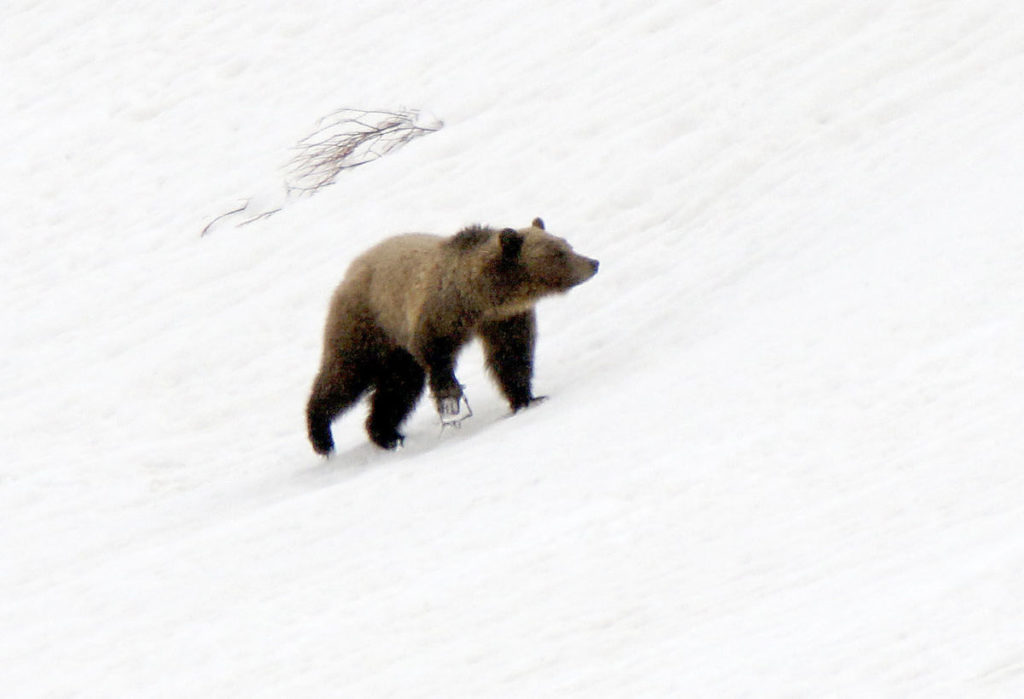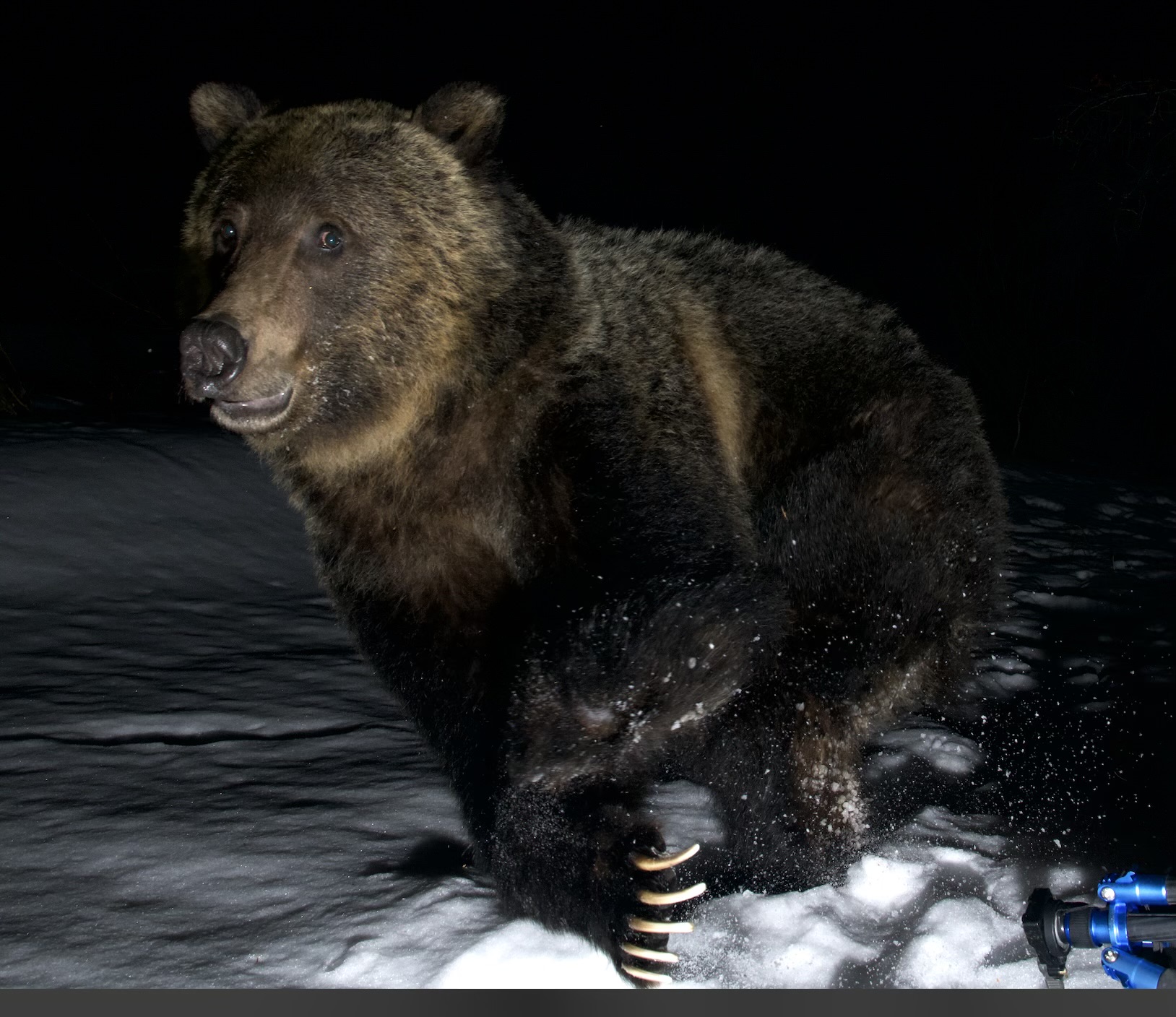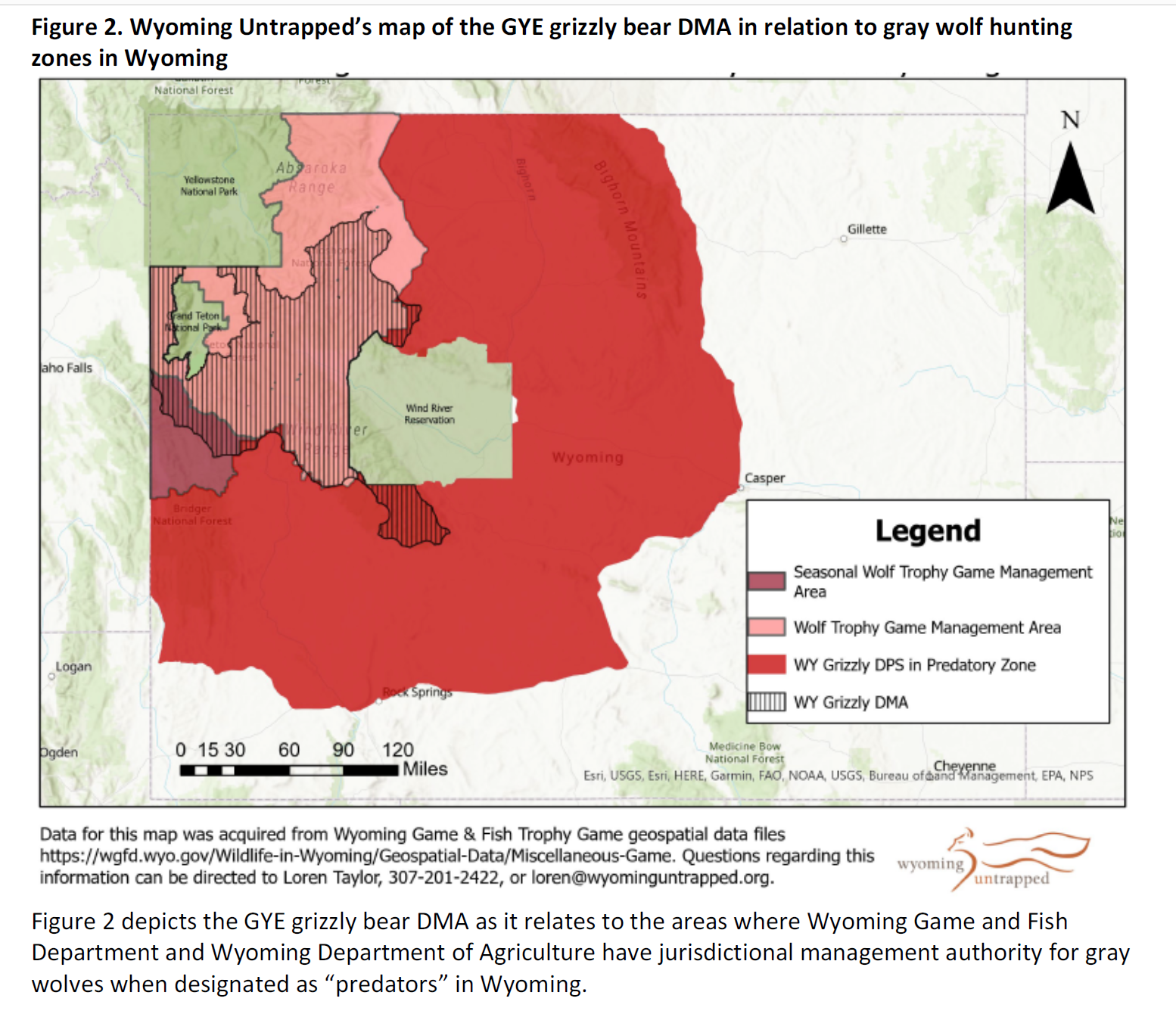Grizzly bear (Ursus arctos) trapping incidents renew the urgency for Wyoming Game and Fish Department's reduction of traps, snares and indiscriminate lethal devices in grizzly bear-occupied habitats.
We urge the USFWS to undertake all in their power to protect all grizzly bears from the unacceptable risk posed by traps and snares. We request that the USFWS advocate for the removal of traps and snares on lands in Wyoming, Idaho and Montana, including on federal public lands managed by sister agencies, which share the Service’s responsibility to conserve threatened and endangered species.
We are aware that at least four grizzly bears have suffered injuries that appear to be the result of trapping or snaring in Wyoming since 2015. That year, a cub on the Shoshone National Forest between the Beartooth Highway and Cody was caught in a Conibear trap set for pine martens, and hikers and then a hunter heard the distressed cub’s cry before calling the incident in to Wyoming Game and Fish Department officials, and in 2017, an adult grizzly bear had a Conibear attached to a right paw on the Bridger-Teton National Forest. The fates of those two grizzly bears were never discovered as their outcomes were never publicly disclosed. This year, 2022, trail cameras captured a grizzly bear who has an amputated left foot. Last fall, a photographer captured photos of a female grizzly bear, a mother of three cubs, who is missing two toes on her front left foot. It is plausible this injury was suffered in a leghold trap.



Images showing the grueling challenges faced by grizzlies and all Wyoming wildlife are rare. @SavannahRoseWildlife has graciously shared her trail cam photos of this maimed young grizzly.
Please keep a lookout for this grizzly. If you should observe it, please contact Grizzly Bear Recovery Coordinator, US Fish & Wildlife Service, Hilary Cooley, hilary_cooley@fws.gov and call Wyoming Untrapped, 307-201-2422.
Wendy Keefover, with the Humane Society of the U.S., consulted with Carter Niemeyer, a retired field biologist with both USDA-Wildlife Services (ADC) and USFWS, who suggest that the injury may have stemmed from entanglement with a foot snare. In an email to us, Mr. Niemeyer writes:
“It’s tough to get a good look at the missing portion of the leg – If it is a clean appearing amputation I would have little doubt it happened due to a snare that was cinched up tight before the cable was broken or chewed through. Could have happened from a private trapper’s snare or an agency animal that broke loose and escaped during collaring activities. Generally speaking, a snare ends up higher on the foot or leg and wraps around the appendage evenly before tightening into a tourniquet. Once the cable has become tightened or embedded into the flesh it obstructs the blood flow and the appendage dies and slough off – often appearing as a clean and straight amputation. With foothold traps, they seldom capture a bear’s entire foot or leg but rather grasp a portion of the foot. The result is a missing row or toes and, perhaps some flesh above the toe or toes. Very, very unlikely that a foothold trap would ever grab a grizzly bear over the entire foot, let alone higher on the leg (the wrist area). As for any other logical explanation for a bear losing a foot or lower portion of a leg, I have none. Even a vehicle strike would rarely, if ever create a wound and resulting amputation, in my opinion.”
We can’t be sure what caused this injury, but we do know that grizzlies and all other Wyoming wildlife are exposed to traps and snares every day of the year, from the day they are born. These devices can be indiscriminate and brutal, with weak regulations which rate Wyoming as one of the worst states in the nation. A leghold requires only a 3-day trap-check time, and snares require a week to 13 days check time.
As a result of this incident, Wyoming Untrapped partnered with Wendy Keefover, Senior Strategist, Native Carnivore Protection of Wildlife, HSUS, to write an official letter to Hilary Cooley, Grizzly Bear Recovery Coordinator, USFWS. We highlighted the importance of recognizing that trapping does not only affect the intended species but also has a negative effect on all wildlife in the area. “The current grizzly bear Demographic Monitoring Area (DMA) overlaps with both the Seasonal wolf trophy game management area (TGMA) and the Predatory Zone, where grizzly bears are at significant risk of incidental take by legal wolf trapping and snaring, or even, potentially, M-44 devices. A large portion of the proposed Greater Yellowstone Ecosystem grizzly bear Distinct Population Segment (DPS), as designated in the Service’s now-vacated delisting rule, falls within the Predatory Zone. Grizzly bear populations are already expanding out from the DMA into larger portions of the DPS and thus are subject to greater risk of trapping and snaring incidents.”

This map displays the Grizzly Bear Demographic Monitoring Area (DMA) as it relates to the areas where the State of Wyoming (Wyoming Game and Fish Department and Wyoming Department of Agriculture) has jurisdictional management authority for Gray Wolves and animals designated as Predators in Wyoming. Outside of the Trophy Game Management Area (TGMA) predator trapping, snaring, and killing by any means occurs year-round and without limit, monitoring, or reporting. The Seasonal Trophy Game Management Area does have restrictions for wolf trapping and snaring during the wolf hunting season but is considered a predator zone during March 1 through October 14 (W.S. §23-1-101(a) (xii) (B) (I) and (II)). As you can see from the map, the current Grizzly DMA overlaps into both the Seasonal TGMA and the Predatory Zone, where grizzlies are at significant risk of incidental take by wolf trapping and snaring. You can also see from this map that a huge portion of the Grizzly Distinct Population Segment (DPS) falls within the Predatory Zone. Grizzly bear populations are already expanding out from the DMA into larger portions of the DPS and thus posing risk of additional trapping and snaring incidents.


